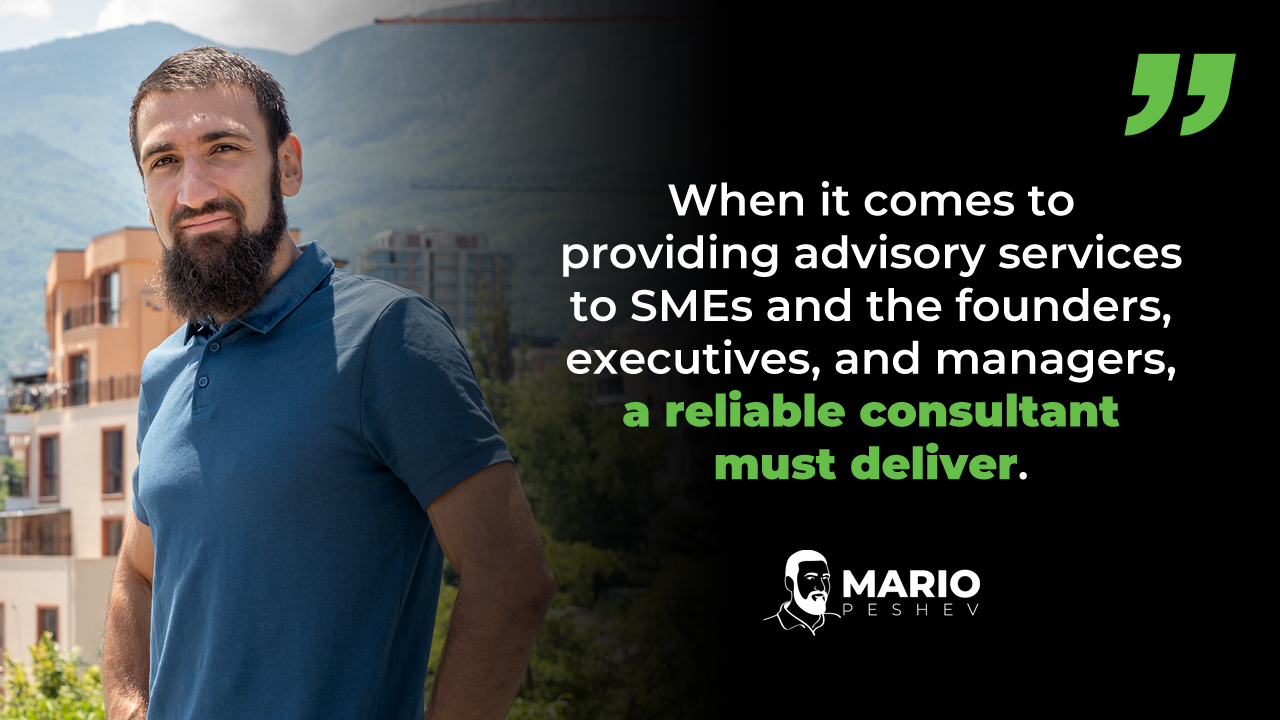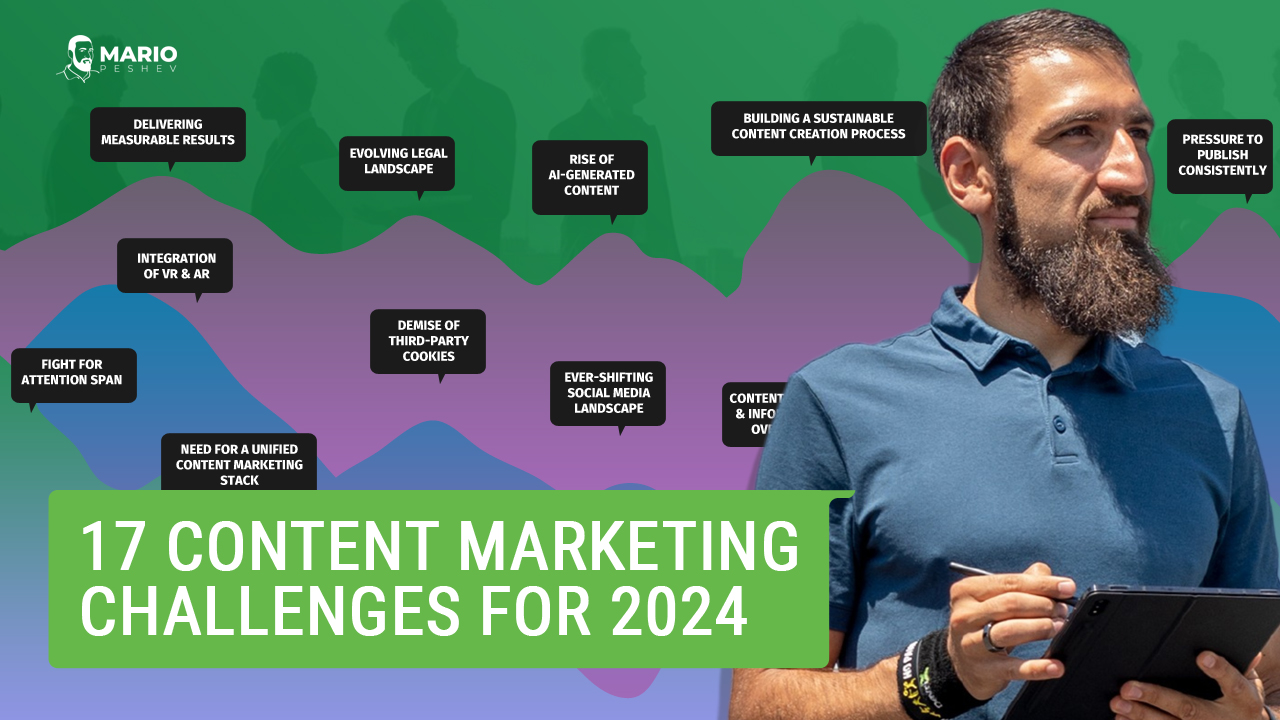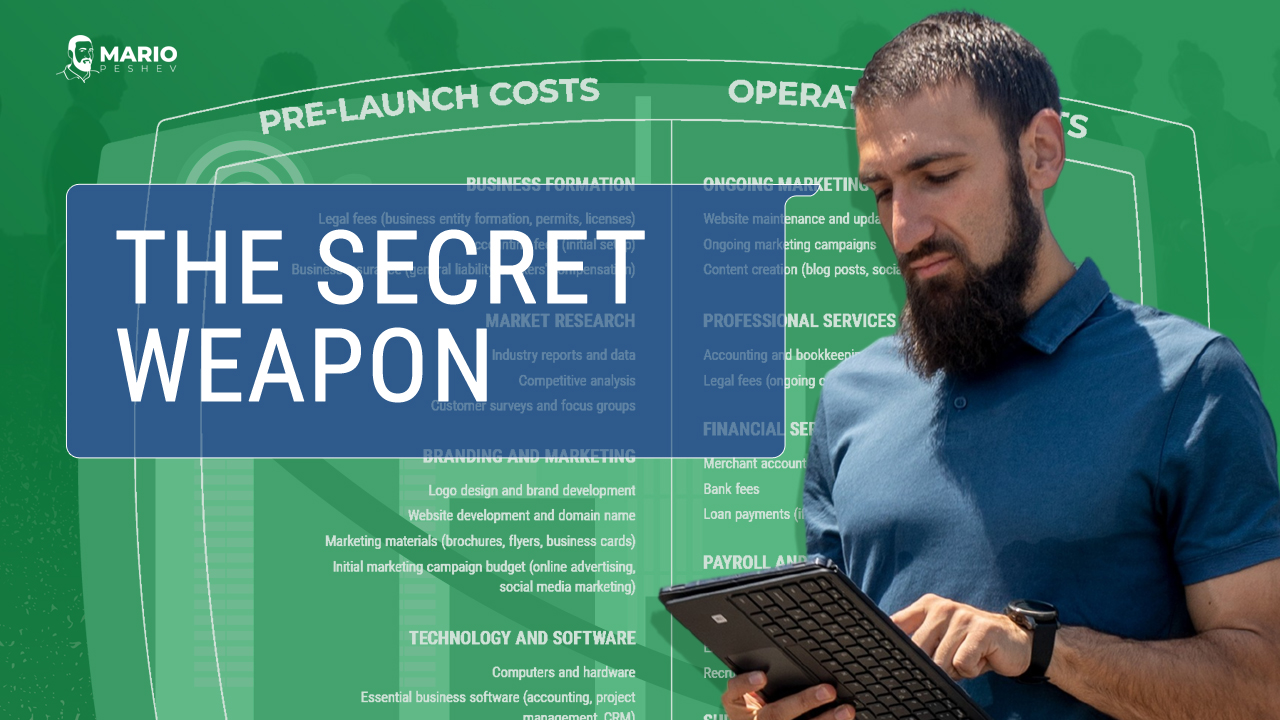Working with 400+ consulting clients involves handling various recurring problems and pain points.
Some of the 6-7-figure businesses I have been consulting on generate $750K to $50M in annual revenue (I charge $6K – $20K for 4-12 weeks of advisory.), and having been immersed in actual work as a corporate business advisor, I know first-hand that most of the business problems are around the following:
- navigating recruitment
- managing technical teams
- handling operations
- running successful agencies
- building distributed teams
- employer branding (to name a few).
- scaling their operations
- automating processes
- growing digital presence
- Producing high-quality content

Hire me as your business advisor
In particular, these are the 18 core topics we evaluate and refine:
1. The Elevator Pitch
We start with the core business proposition. “We do X to help Y solve Z.”
No matter if you sell, recruit, pitch, or brand, clean messaging is crucial. Oftentimes, it’s vague and needs an intermediate solution while we pivot.
Understanding the unique selling benefit may appear as intuitive – but it rarely is.
Serving a number of different audiences can blend the core benefits and dilute the value. Refining what works for every single customer amplifies the messaging.
2. Total Addressable Market (TAM)
How large is the business segment that the company serves? This includes:
- Demographics
- Areas
- Constraints (“graduates”, “drivers”)
There are different schools of thought on refining the target audience. You may be familiar with the concept of “blue ocean” and “red ocean” – aiming to develop a core offer that faces less competition. Niching down is a great way to segment.
The two biggest mistakes here:
- “Each female is a potential customer.”
- “X is a $200b market so are we.”
In the grand scheme of developing a funnel, only 3% of your customers are ready to purchase at a time.
If you don’t refine the right market early on, you may end up with a bland message converting under 0.3% of your traffic (making it impossible to generate sufficient revenue).
3. Buyer Personas
A detailed breakdown of the ideal customer. (Narrowed down from the TAM above.)
- How many personas are there?
- Detailed enough?
- Are the main customer pain points established?
- Are they fictional or based on real clients?
Review customers and compare.
4. The Competitive Landscape
The next step is identifying the level of complexity to land a sale.
- How competitive is the market?
- How many businesses offer similar services?
- What is the distribution of competitors to TAM?
- How many customers does a competitor serve on average?
- How likely is it for a customer to change vendors?
- How expensive is it to migrate to a new solution?
There are no right or wrong answers.
Highly competitive markets have large TAM and allow for niching down and defining USPs. Low competition costs $$$ to educate.
5. Business Structure
Back to the core business reality. Look into the standard P&L or at least core metrics:
- Revenue
- COGS
- Profit margin (%)
- Operating expenses
- Payroll
- Growth costs (% of incurred expenses for closing new business)
This looks differently for service vs. product, B2B vs. B2C etc., but is an integral starting point.
A clear breakdown of costs and margins allows for some forecasting and budgeting exercises, along with allocating costs to sales, affiliates, referrals, partnerships, and more.
6. Accountability Chart
Most advisors or consultants in my network are surprised I spend so long on this, but I do. The org chart is SO important.
- How flat vs. hierarchical is the company?
- Who are your lieutenants?
- What are the core C-level roles?
- Key departments
I’ve seen more problems scaling companies due to the org chart than most other well-known problems.
- Too flat = management has no time to strategize and lead.
- Too deep = micromanagement, overcommunication, lack of self-sustainability.
- Too many depts = hard to “own” initiatives.
7. Core Responsibilities
The “recurring activities” people are in charge of are what we call the core responsibilities of a team. This mixes “who owns what” and “what happens if X disappears tomorrow.” In data/tech companies, there’s a lot of maintenance/stability going on that nobody knows about. This can be organized in sheets, mind maps, workflows, Notion – you name it.
We built SaaSBPM as a standalone tool for businesses and something we use internally (and for our clients). It’s a transparent “contract” between execs and staff on recurring roles and expectations.
8. Revenue Generators
What are the key lead generation channels in-house? Aside from the founders, is it Sales? Marketing? Event management? Operations? What’s the % distribution? Then… Who generates the output/service clients pay for? This isolates sales + product.
Identifying the revenue generators help put the focus on activities that drive ROI.
9. Limiting Resources
Some companies scale easily. Most don’t. A gym can only accommodate so many classes/people that the facility can handle. A marketing firm can serve customers up to the quota that marketers and account managers can handle. Know your quota.
Since companies MUST scale… and develop plans that scale with the revenue projections.
Growing 30% YoY means hiring X, Y, Z. What about tooling? Office space? Vendors? Other contracts? Are there new laws that kick in with scale? Healthcare? Labor laws?
10. The Business Forefront
What does the business look like on the outside?
- Mission/vision statements
- Recent public announcements
- Trustpilot or Glassdoor reviews (plus social)
- Core values
What would impair sales conversions or hiring success?
11. Core Processes
How does the company operate on day-to-day?
- Meetings – how many recurring/ad-hoc? How long? Why?
- Is there any agenda in play?
- Are these getting documented?
- Are sprints implemented?
- What’s tracked weekly?
- What happens if meetings are banned?
As I’ve been preaching async for years, I question and challenge executives on alternative approaches with regard to:
- Project management systems
- Scorecards
- Monthly business reviews
- Tools like ZipMessage, Loom, Status Hero for transparent and async planning
12. Business Velocity
What does a successful business look like? “More sales” or “30 new hires” is the wrong answer. This actually looked foolish before 200,000+ layoffs over the past few months. But that’s exactly what I’ve been focusing on with my clients. Here’s what velocity looks like:
- What are the KPIs that matter to the business?
- Creating scorecards for tracking these down: both high-level and departmental
- Quarterly planning
Implementing Objectives and Key Results (OKRs) or adopting EOS Worldwide solves a lot of problems.
13. Tough Choices
Identifying the ideal future often leads to… baggage. Wrong processes, inappropriate tooling, and bad hiring decisions taken over the past couple of years are just some of this baggage.
Mitigation could be quick and painful or gradual and fair:
- Feedback criteria
- Performance Improvement Plans (PIPs)
- Transition plans
- Flexible options
Look into ways to reposition existing services or departments into revenue-generating activities. Or, launch a new product offering where low performers can shine (and earn their seat on the table.) Explore outsourcing options to backfill, train, and cooperate.
14. New Revenue Channels
I’ve seen 8-figure businesses going under while relying on a single source of revenue. SaaS extensions that are affected due to policy changes or core products failing. Payment gateways blocking accounts.
Diversification is paramount to survival. Going horizontal too early is distracting. But being too late can be detrimental. Look into the following alternatives:
- Strategic partnerships
- Marketplaces
- Communities
- PR
- SEO
- PPC
Uber has Eats, Amazon sells everything, and Samsung builds tons of hardware. Survival mechanisms.
15. Management Efficiency
With new metrics, targets, and goals, people will perform differently.
Some need coaching. Others should pair more often until they grasp the bigger picture.
And some may be opposed and leave.
Tackle that 1:1 consistently and unblock.
Develop clear processes to follow so everyone in the management suite is on the same page. This transition period will inevitably lead to adjustments.
- Individual needs will vary. Some team members may require coaching to adapt to the new dynamics, while others might benefit from paired work to gain a broader understanding of the changes.
- Be prepared for potential resistance. Not everyone will readily embrace the new approach. Addressing any objections through open communication and support is crucial. In some cases, it might not be the right fit, and letting go may be necessary.
Consistency is key in navigating this transition. Regular one-on-one meetings provide opportunities to address individual concerns and unblock any roadblocks. Additionally, establishing clear and documented processes ensures everyone in the management team is aligned and operates from the same page.
By anticipating these changes and taking proactive steps to address them, you can minimize disruption and facilitate a smoother and more successful transition for everyone involved.
16. “Delegate and Elevate”
(Another principle from The EOS Life by Gino Wickman outlining a core problem.)
Establishing new KPIs and clear responsibilities should develop autonomy. Build repetitive processes and offload to your reports directly. Executives need strategy time, not “in the weeds.”
Iterate on “time wasters”!
I take productivity to heart and get frustrated with every single ping, call, and “urgent” email. Is it really urgent? What are the best ways to resolve this? Does everyone have the tools to get it done? What additional training will teach them?
17. Hiring Considerations
Understanding how the machine works involves the following:
- You need A-players to grow.
- Develop clear value propositions for the organization
- Use the recurring roles in #7 as job descriptions
- Implement “behavior-based” interviews
- Prepare onboarding plans that rock
Decide on hiring vs. outsourcing. Outsourcing can be performance-based. Set expectations on results. It can be more rewarding than buying time. Outsource non-core roles and hire core product people who need to be deeply entrenched in the culture/values.
18. Compliance
In 1931, Al Capone was found guilty of tax evasion. Enterprises can fumble for tax or legal reasons. The two biggest enemies of giants. We review pitfalls in employment and labor law, tax structure, and legal commitments with vendors.
While I’m not a lawyer (or a CPA), I’ve worked with hundreds of businesses (and built several myself). There are certain ways to offload responsibility to cloud providers. Amazon may be willing to take on security responsibility for AWS or FastSpring/Paddle for taxes.
Structuring the business as a holding is another way to approach that. Limited liability with separate companies. Org chart being more flat and transparent. Key revenue responsibilities per business unit. Filing with doola for sifting through IRS challenges.
While we cover individual problems and every company is different, the core framework structures the key segments in a funnel:
Sales -> Value prop -> Management -> Core team -> Scale -> Compliance.
Then, I sit in weekly meetings or review scorecards with clients to streamline.
View this post on Instagram
Ever since I bootstrapped my first company, I have devoted my time to management masterminds, thousands of interviews, validating marketing techniques, and focused efforts on developing robust business strategies.
With most of my consulting contracts revolving around tech, digital transformations, marketing strategies, and WordPress integration for enterprises, I have enjoyed tackling business problems through the following:
- Data-driven planning with the integration of digital tools and solutions
- Establishing strategies for successful growth online across several channels
- Determining the right technology stack for boosting the digital presence
- Reviewing and implementing digital and content strategies
- Working on actionable channels for partnership development
- Networking and PR opportunities
- Short-term and long-term strategies
- Employee motivation
- Employer branding
- Managing a growing team
- Scaling operations with remote talent
- Optimizing and designing internal workflows and processes
- Defining KPIs and monitoring results
- Establishing monetization channels with a reliable growth strategy in mind
Those activities and the additional ones covering operations, recruitment, management, and strategy have equipped me to define processes and scaling teams successfully.
When it comes to providing advisory services to SME founders, executives, managers, and consultants, we do a deep dive for every single business.
But since my $350/hr is not suitable for every business, I’ve designed a more affordable way to join my community and access my blueprints.




